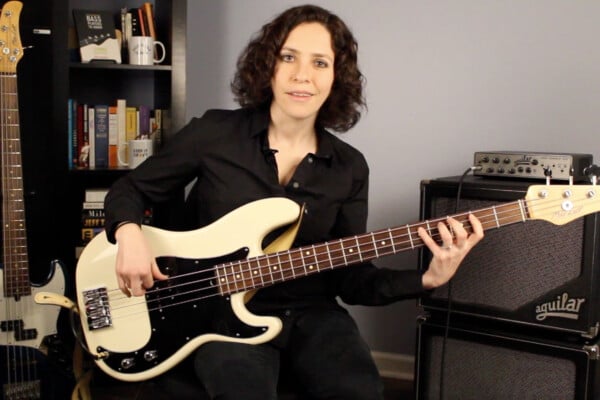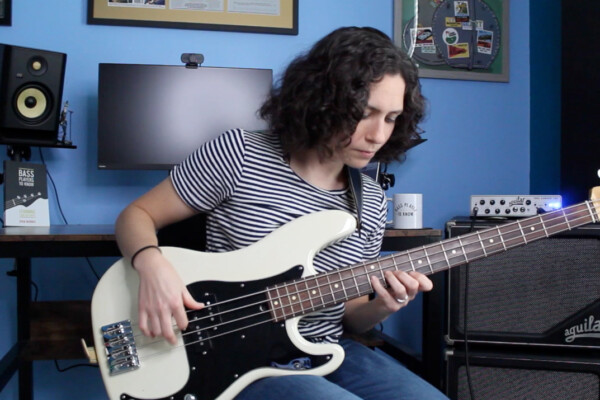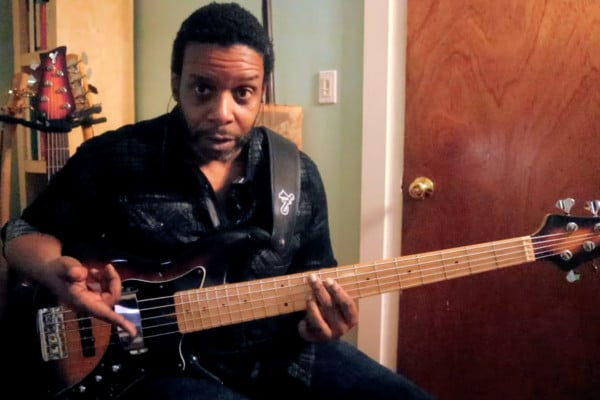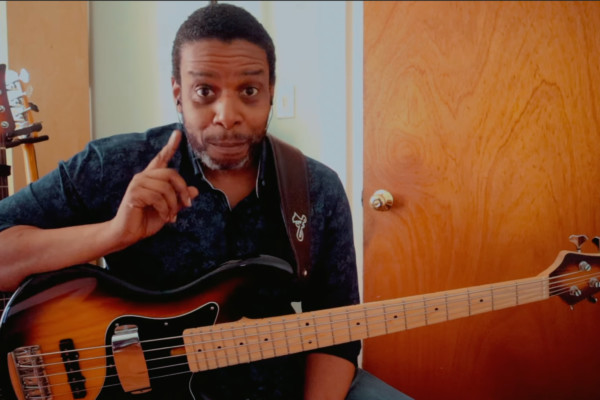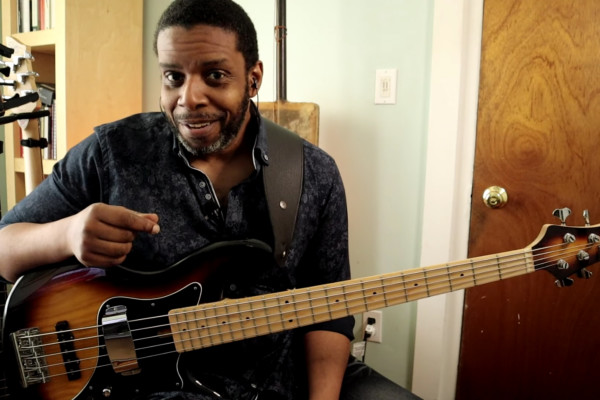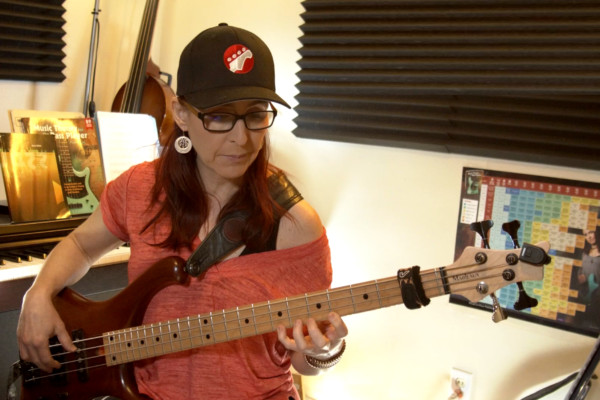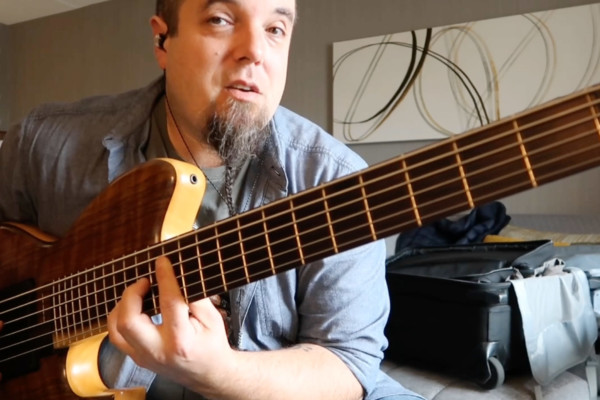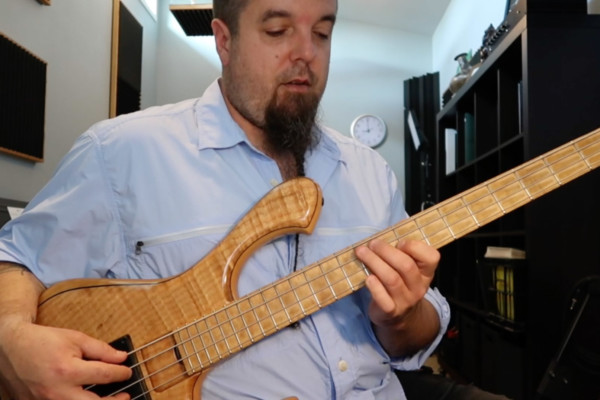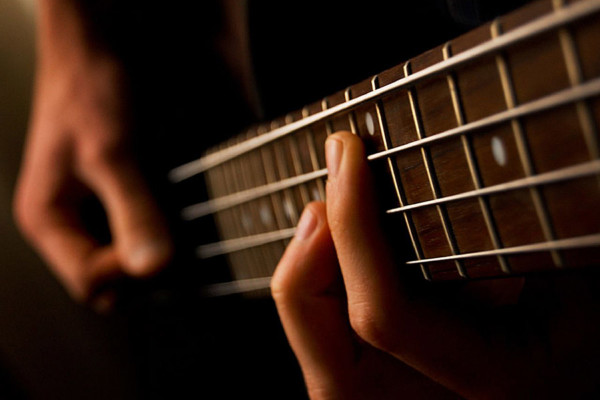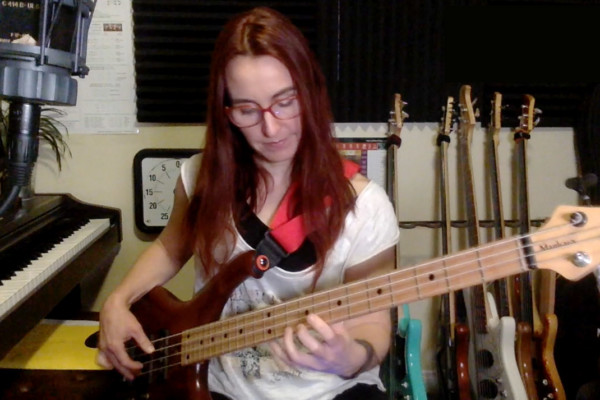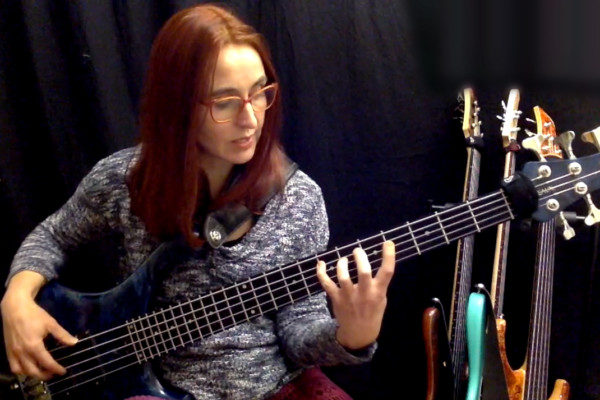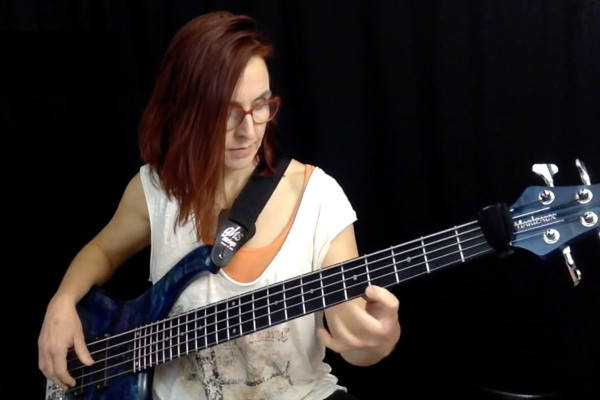Scales Archives
Easy Scale Exercises For Bass: Scale In 4ths
This bass lesson features a quick technique exercise that can seriously help your mobility on the bass. It’s about developing the adjacent string toggle, or the ability to quickly play the same fret on two strings that are next to one another.
Keep It Groovy: G Major Scale Across Two Octaves
In today’s “Keep It Groovy” lesson, Ryan Madora goes over two popular major scale shapes and a great way to connect them to play over two octaves. Ryan focuses on what she calls the “4-fret span” and “5-fret span” shapes.
The Brown’stone: Beautifully Rhythmic & Melodic Major Scale Patterns
This week in The Brown’stone on No Treble, Rich Brown has a great scale exercise to help you with melody and rhythmic phrasing. This exercise is based on a simple concept that can be applied to any scale.
The Brown’stone: How Well Do You Know Your Major Scales?
This week in The Brown'stone on No Treble, Rich Brown takes an in-depth look at major scales and how to play them in ways you might not have considered before. This lesson could be a real eye-opener.
The Brown’stone: The Most Beautiful Sequential Exercise
This week in The Brown’stone, Rich Brown takes us through one of his favorite sequential patterns to play on major and minor scales. He loves this exercise because it’s so beautifully melodic and can easily be applied to any musical situation.
Talking Technique: The Speed Lick Trick
Three-note-per-string patterns offer a lot of opportunities for lightning-fast licks. In this episode of Talking Technique, Ari shows us how to get started with the idea of them by practicing a scale all across the bass in speed lick fashion.
Exercise For Unlocking The Fretboard
In this video, we’ll work through a great pattern that I learned from the great trombonist Dave Glen. It’s a fantastic way to make the transition between scales and arpeggios and also helps you to relate them more naturally to different chord types. I found this very useful when I first heard Dave talking about it and I think you...
Modal Arpeggio Patterns for Bass
We’re continuing our exercise series this week with a lesson on modal arpeggio patterns. Learning modes, scales, and patterns help to open the fretboard up in your mind. You learn the connections, intervals, and relationships of the notes. Some of this sounds more complicated than it is. Hang in there and we will work it all out.
Practicing Scales vs. Arpeggios
Q: Should I spend my time in the shed practicing scales or arpeggios? Why one over the other? A: Ultimately, you want to be familiar with everything relating to the music you want to play and your instrument, but it’s good to prioritize. When trying to prioritize in the shed, it’s important to understand why you are working on this...
Talking Technique: 11 Strategies for Learning an Alien Scale
Do you know what the Byzantine Scale is? How about Double Harmonic Major? Gypsy Major? Well, after this episode of Talking Technique, you will. But this episode is about so much more than just a scale – in it, we’ll cover 11 strategies to get a new scale under your fingers. The goal here is to embed the scale so...
Talking Technique: Whole Tone Riffin’
The whole tone scale is a really interesting scale. Unlike our major and pentatonic scales, it’s built out of all whole steps making it sound a little bit eerie and bright. Because the scale is symmetrical, it does not sound like it has a beginning or an end. Another neat fact is that there are only two whole tone scales:...
Talking Technique: “Mordents” for Finger Strength
Today we have another multi-layered workout for you to build up your finger strength. This lesson will help you practice a scale up and down one string while improving coordination and strengthening your fingers. It’s not a beginner’s workout, but wherever you are on your journey, give it a good try. You’ll need to be ready to play hammer-ons and...
